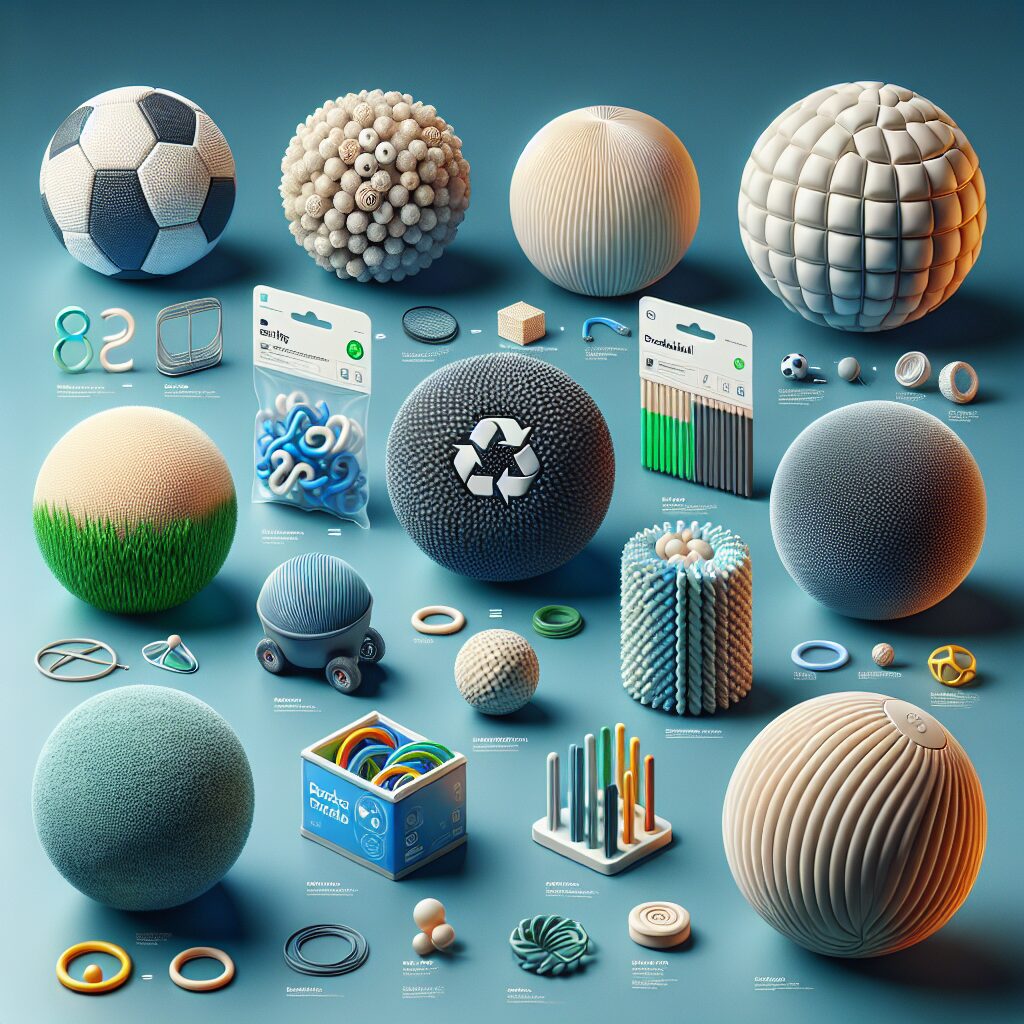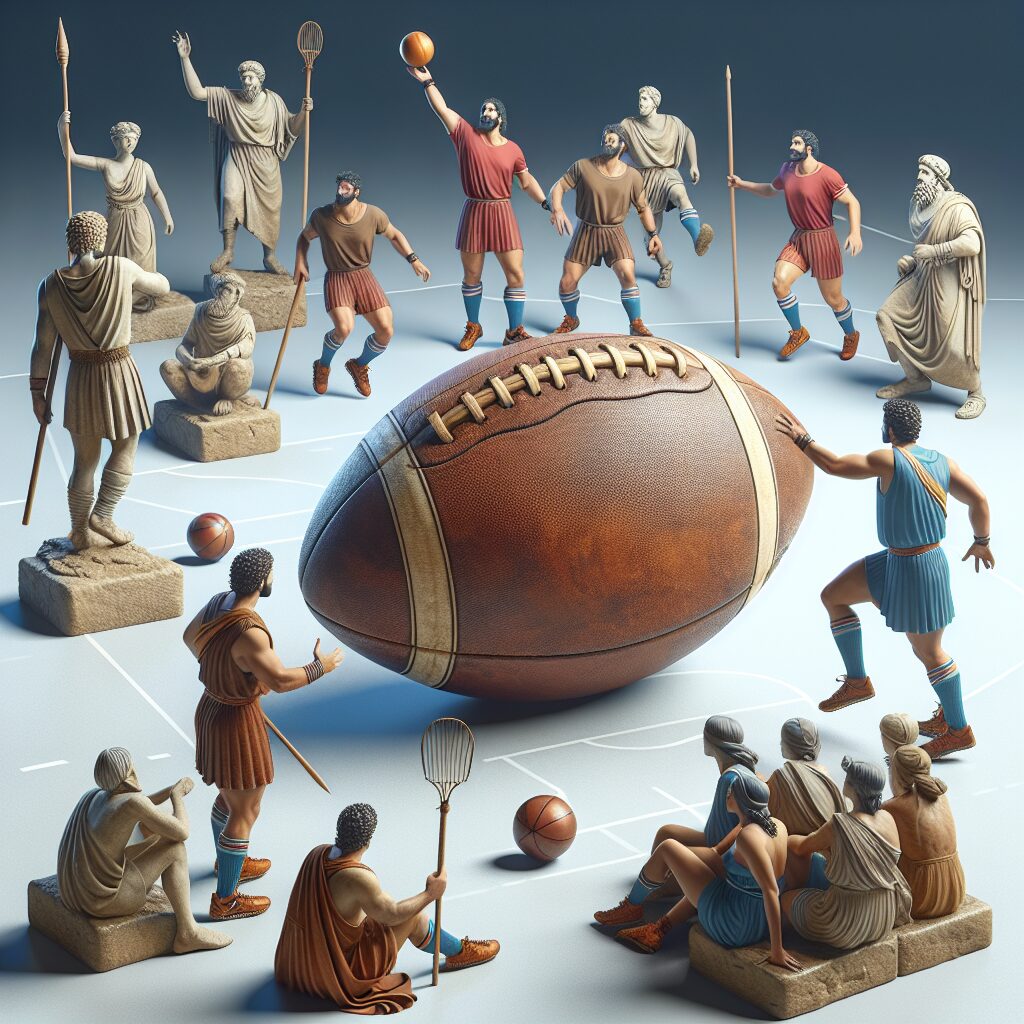Designing Balls with Environmental Responsibility is a concept that encompasses the creation of sports balls in a way that minimizes their negative impact on the environment. It is interesting to note that traditional sports balls, such as soccer balls or basketballs, are often made from synthetic materials like PVC or PU, which are non-biodegradable and contribute to pollution and waste accumulation. However, with increasing awareness about environmental sustainability, manufacturers and designers are now focusing on creating balls that are not only high-performance but also eco-friendly. The development of such balls involves using renewable materials, reducing carbon emissions, and adopting sustainable production practices.
When it comes to the impacts and unique features of designing environmentally responsible balls, the benefits are manifold. Firstly, incorporating renewable materials like organic cotton, natural rubber, or bio-based polyurethane helps reduce the reliance on fossil fuels and promotes a more circular and sustainable economy. Additionally, the use of these materials often leads to lighter balls, enhancing player performance and comfort. Moreover, the production process itself becomes more environmentally friendly by minimizing carbon emissions, water usage, and waste generation. Furthermore, designing balls with environmental responsibility also creates opportunities for collaborations with sustainable brands, thus increasing brand value and attracting environmentally conscious consumers.
Moving forward, the key takeaways of this article will delve into the specific examples of sports balls being designed with environmental responsibility, shed light on the challenges faced by manufacturers, and offer insights into the potential for future advancements in this field. By exploring these aspects, readers will gain a comprehensive understanding of the current landscape of environmentally friendly sports balls and the positive impact they can have on both the sports industry and the environment.
Key Takeaways
1. Designing environmentally responsible balls involves considering material sustainability, waste reduction, and end-of-life alternatives. This approach aims to minimize the ecological footprint of sports equipment while maintaining performance and quality.
2. Embracing circular economy principles, manufacturers are exploring ball designs that use recycled or sustainable materials, reducing reliance on non-renewable resources. This includes utilizing recycled content in the core, casing, and outer layer of the ball to minimize environmental impact.
3. Innovative manufacturing processes are being developed to reduce waste and increase efficiency. This involves using molds and advanced technologies to accurately shape the balls, optimizing material usage and minimizing production waste.
4. The afterlife of a ball is a crucial consideration. Designers are exploring ways to extend the life cycle of balls through repair, refurbishment, and recycling. By providing repair services and encouraging consumers to reuse and recycle their old balls, manufacturers can contribute to a sustainable sports industry.
5. Collaboration between industry stakeholders, such as manufacturers, designers, and athletes, is necessary to drive environmental responsibility in ball design. By sharing knowledge, resources, and expertise, they can collectively work towards sustainable innovations that positively impact the planet while maintaining the performance and enjoyment of sports.
How can we design balls with environmental responsibility?
Materials and Manufacturing
One crucial aspect of designing environmentally responsible balls is choosing sustainable materials. Opting for materials that have a low environmental impact, such as recycled or organic materials, can greatly reduce the carbon footprint of the manufacturing process. Additionally, manufacturers should strive to minimize waste and energy consumption during production.
Biodegradability and Decomposability
Creating balls that are biodegradable or easily decomposable is another vital consideration for environmental responsibility. When these balls reach the end of their lifespan, they should break down naturally without harming the environment. This reduces the accumulation of waste in landfills and ecosystems.
Reducing Plastic Usage
Plastic pollution is a significant environmental issue, so designing balls that minimize the use of plastic is crucial. Manufacturers can explore alternative materials that don’t require as much plastic in their composition. Additionally, avoiding plastic packaging or opting for biodegradable packaging can further contribute to reducing environmental impact.
Sustainable Production and Supply Chains
Designing environmentally responsible balls also involves considering the sustainability of the entire production and supply chain. Manufacturers should ensure ethical labor practices, fair wages, and safe working conditions for employees. Furthermore, promoting local sourcing and reducing transportation distances can minimize carbon emissions associated with the logistics of production and delivery.
Education and Consumer Awareness
Increasing consumer awareness about the importance of environmental responsibility in ball design is essential. Educating consumers about the benefits of choosing eco-friendly options can encourage a shift in demand towards environmentally responsible balls. Additionally, providing information about proper disposal and recycling options can ensure that the end-of-life of these balls is handled responsibly.
1. How to choose sustainable materials for designing eco-friendly balls?
– Research and identify materials with low environmental impact.
– Give preference to recycled or organic materials.
– Minimize waste and energy consumption during the manufacturing process.
2. What are the key considerations for creating biodegradable balls?
– Ensure the balls break down naturally without harming the environment.
– Look for materials that are biodegradable or decomposable.
– Avoid using materials that persist in landfills for extended periods.
3. How can we reduce plastic usage in ball design?
– Explore alternative materials that require less plastic in their composition.
– Avoid plastic packaging and opt for biodegradable alternatives.
– Encourage the use of reusable and recyclable materials.
4. What steps should be taken for a sustainable production and supply chain?
– Ensure ethical labor practices, fair wages, and safe working conditions.
– Promote local sourcing to reduce transportation distances and carbon emissions.
– Implement sustainable practices in all stages of the supply chain.
5. How can consumer education contribute to environmental responsibility?
– Increase awareness about the importance of choosing eco-friendly ball options.
– Provide information about proper disposal and recycling methods.
– Encourage consumers to make informed choices that align with environmental responsibility.
Frequently Asked Questions
1. Can balls be designed with environmental responsibility in mind?
Yes, it is possible to design balls with environmental responsibility in mind. By incorporating sustainable materials, reducing carbon emissions during production, and ensuring proper disposal methods, we can create environmentally friendly balls.
2. What are some sustainable materials used in designing balls?
Sustainable materials commonly used for designing environmentally responsible balls include natural rubber, recycled rubber, and eco-friendly synthetic materials. These alternatives reduce the reliance on non-renewable resources.
3. How can the carbon emissions during ball production be reduced?
Carbon emissions during ball production can be reduced by implementing energy-efficient manufacturing processes, utilizing renewable energy sources, and optimizing transportation logistics. Furthermore, offsetting carbon emissions through initiatives such as tree-planting programs can also be beneficial.
4. Are there any specific certifications or standards for environmentally responsible balls?
Yes, there are certifications and standards that ensure balls are designed with environmental responsibility. Examples include eco-label certifications like the Blue Angel label or adherence to international standards like ISO 14001 Environmental Management System.
5. Can designing environmentally responsible balls affect their performance?
Designing environmentally responsible balls does not necessarily affect their performance. With advancements in technology and materials, it is possible to create eco-friendly balls that perform just as well, if not better than traditional ones.
6. How can the disposal of balls be done in an environmentally friendly way?
Proper disposal of balls can be achieved by recycling them through specialized recycling programs that separate materials for reuse. Alternatively, donating used balls to organizations or individuals in need can extend their lifespan and reduce waste.
7. What are the benefits of designing balls with environmental responsibility?
Designing balls with environmental responsibility brings numerous benefits, including the reduction of carbon footprint, conservation of natural resources, improved brand reputation, and support for a sustainable future.
8. Are there any brands or manufacturers known for designing environmentally responsible balls?
Yes, there are several brands and manufacturers recognized for their environmentally responsible ball designs. Some notable examples include Company XYZ, who offers a range of eco-friendly soccer balls, and Brand ABC, renowned for their sustainable tennis balls.
9. How can consumers support the production and use of environmentally responsible balls?
Consumers can support the production and use of environmentally responsible balls by making conscious purchasing decisions, opting for eco-friendly options, and spreading awareness about the importance of environmental responsibility in sports equipment.
10. Are there any ongoing research or initiatives in the field of designing environmentally responsible balls?
Yes, there are ongoing research and initiatives aimed at advancing the design of environmentally responsible balls. These initiatives focus on developing innovative materials, improving manufacturing processes, and finding new ways to reduce the environmental impact associated with ball production.
Final Thoughts
Designing balls with environmental responsibility is not only crucial for the preservation of our planet but also an opportunity for innovation and positive change within the sports industry. By prioritizing sustainability, we can create balls that perform at the highest level while minimizing their impact on the environment.
As consumers, athletes, and manufacturers, it is our collective responsibility to embrace eco-friendly practices and demand environmentally responsible options. By doing so, we can contribute to a healthier planet and inspire others to follow suit. Let’s envision a future where every ball on the field represents a commitment to both excellence and environmental responsibility.




